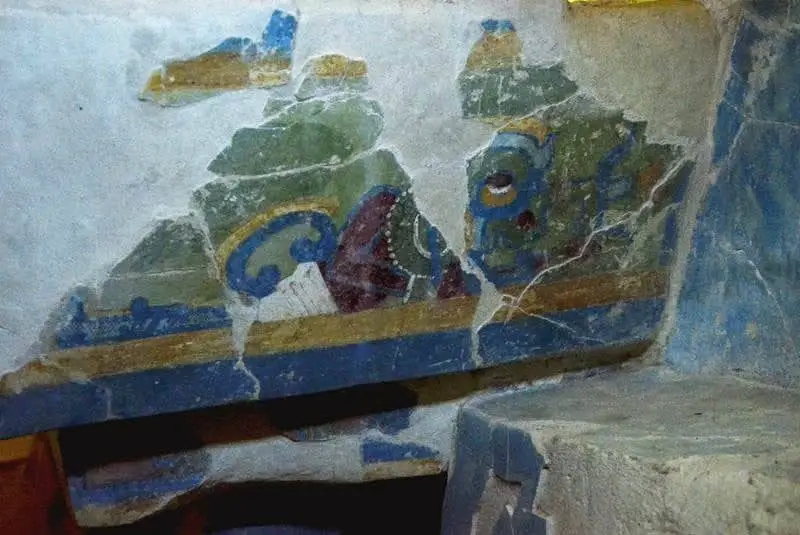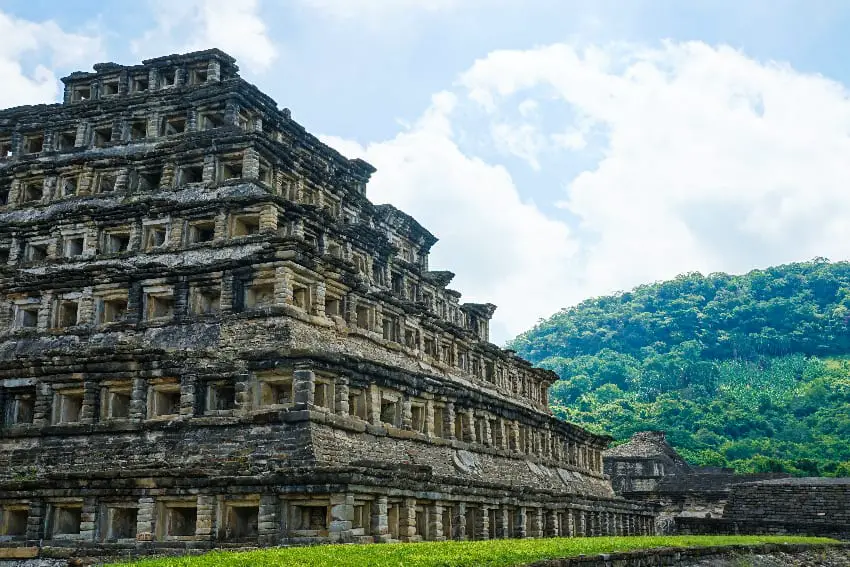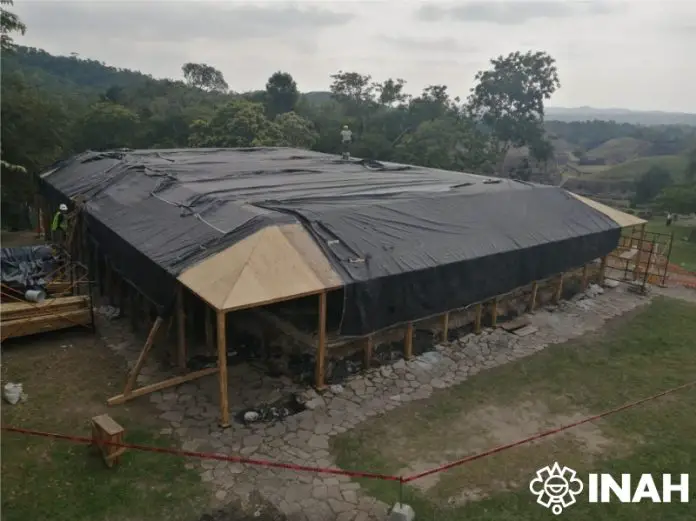Murals created between 800 and 1,200 years ago in El Tajín — one of the largest and most important cities in Mesoamerica — suffered what was deemed “irreparable” damage in a pre-dawn fire on Wednesday.
Created by the Totonac peoples who inhabited the area, the murals are registered as a cultural asset by UNESCO.
El Tajín is 50 kilometers inland from the Gulf of Mexico in what is now the state of Veracruz, about halfway between the coastal cities of Ciudad Veracruz and Tampico, Tamaulipas. It’s located in the jungle 18 kilometers from Poza Rica, Veracruz.
The city flourished from 600 to 1200 A.D., during which time numerous temples, ballcourts and pyramids were built. The ancient city is sometimes described as a lost civilization, because after it fell to the Aztecs in the early 1200s, its existence remained unknown to colonizers until 1785.

The fire was started by “unknown subjects” in building 1 of the Totonac archaeological zone, causing damage to the murals “that can no longer be repaired,” according to the newspaper El Financiero.
The National Institute of Anthropology and History (INAH) issued a release noting that the vandals entered the building, which was largely covered in plastic, and set a fire. The agency also noted that it had insurance for such an event.
Since June, the archaeological site allegedly had been under the protection of the National Guard.
“We strongly disapprove of the acts of vandalism that occurred in the archaeological zone of El Tajín in the state of Veracruz, which caused irreversible damage to the painted mural, a cultural heritage of humanity,” said a statement issued by the union of INAH workers. “We demand that the authorities of the INAH and the federal government carry out the necessary investigations to find those responsible and for justice to be delivered.”
The vandals went unnoticed “despite the presence of the federal forces,” noted El Financiero. The paper added that there are stiff fines for invading archaeological zones and, depending on the final extent of the damages, sanctions could range from three to 10 years in prison.
The murals measured approximately 30 meters in length and underwent three years of restoration work concluded in 2012.
The incident occurred in an area where work is being carried out to restore a roof that partially collapsed due to Hurricane Grace in 2021. A lot of protective plastic was being used in the area, but the fire melted much of it — including some that melted right onto the murals.
The INAH noted that specialists “are assessing the extent of the damage, both to the structures and to the murals” and that “according to the first inspections, it can be noted that the effects on building 1 are reversible.”

El Tajín is believed to have risen to power in the centuries between the fall of the city of Teotihuacan and the rise of the Aztec empire. At its height between 800 and 1200 A.D., it was the most important center of the Mesoamerican northeast, with vast cultural influence. Archaeologists estimate that the city had a population of 15,000 to 20,000.
Its most impressive ruin is the 65-foot-tall Pyramid of the Niches, “a masterpiece of ancient Mexican and American architecture,” according to UNESCO. It has 365 steps, suggesting that it’s a sort of astronomical calendar.
Despite its historical significance, El Tajín today is one of the least-visited archaeological sites in all of Mexico, though it does play host each March to the Cumbre Tajín Festival, which features indigenous and foreign cultural events as well as concerts.
With reports from El Financiero , El Economista and INAH.gob.mx
